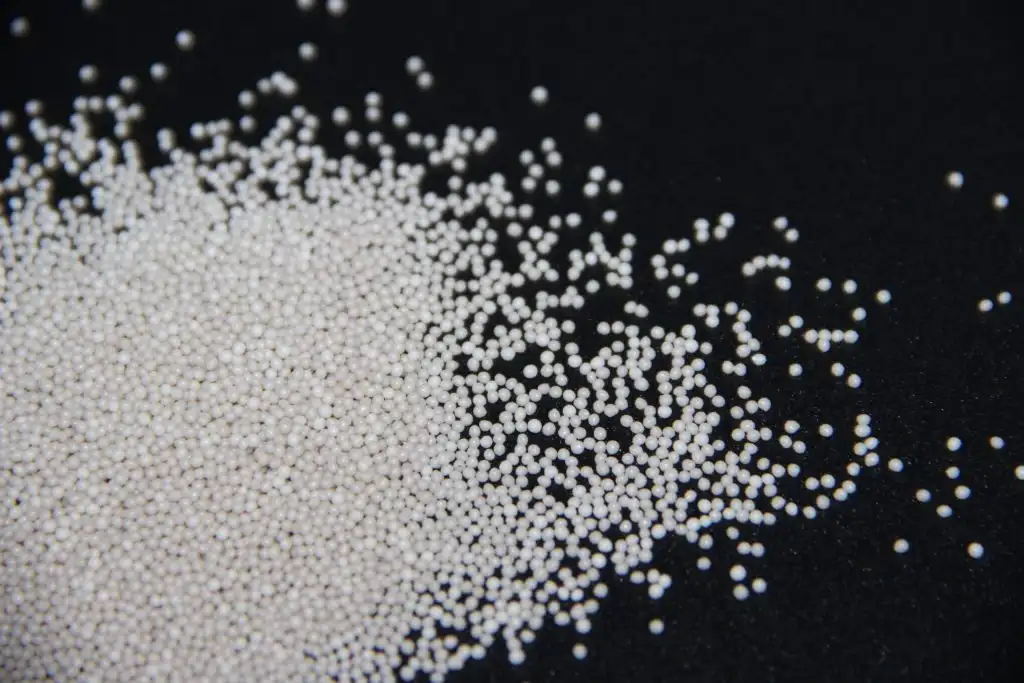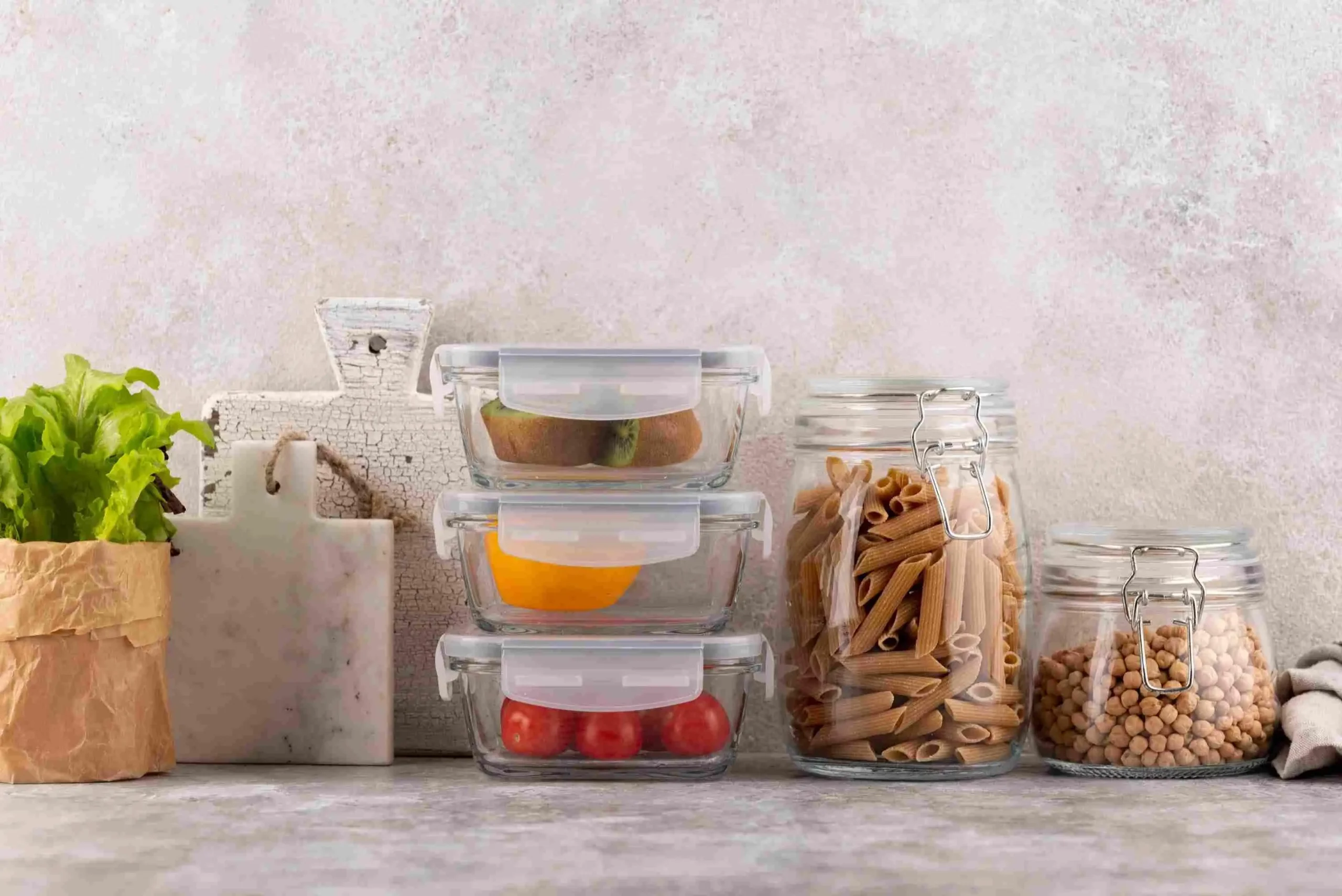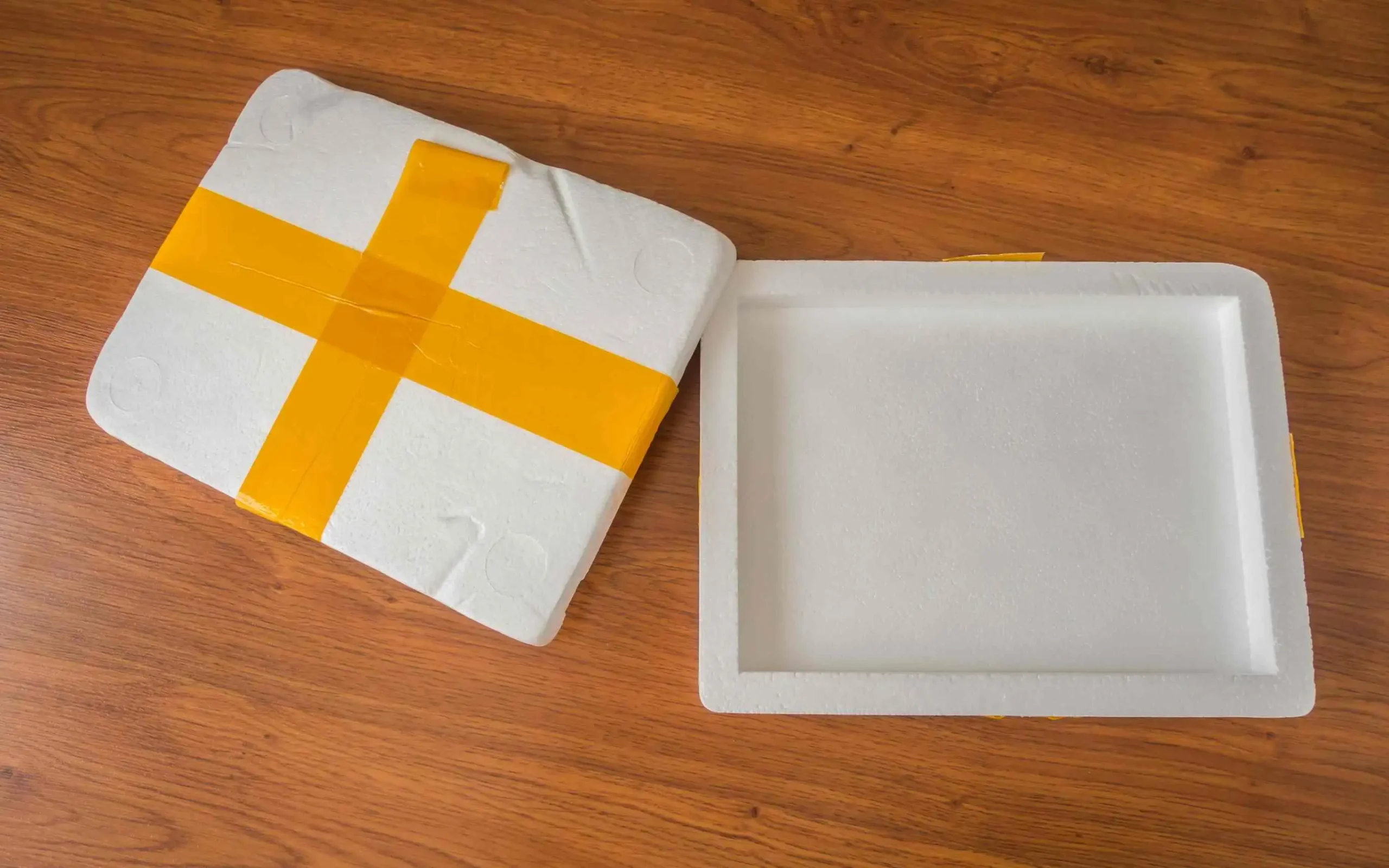Expandiertes Polystyrol, oder EPS, ist ein Material, das oft unbemerkt bleibt, aber es ist in so vielen Produkten und Branchen von entscheidender Bedeutung, denen wir täglich begegnen. Ob in Lebensmittelbehältern, Tech-Gadgets, Hausdämmung oder Schutzausrüstung, EPS ist überall um uns herum. Selbst bei seiner allgemeinen Präsenz erkennen viele Leute nicht, wie anpassungsfähig und erfinderlich dieses leichte, robuste Material sein kann. Dieses Stück taucht in die überraschenden Gegenstände aus EPS ein und zeigt, wie Unternehmen gerne HUASHENG Sie ebnen den Weg für umweltfreundliche und personalisierte EPS-Optionen.

Die Grundlagen von Expandiertem Polystyrol (EPS)
EPS ist nicht nur Schaum. Es ist ein erstklassiges Material, das für eine Vielzahl von Bedürfnissen in verschiedenen Bereichen entwickelt wurde.
Woaus besteht EPS-Material?
Expandiertes Polystyrol stammt aus winzigen Polystyrolperlen, die mit einer Blasstoff, normalerweise Pentan, gemischt sind. Wenn sie erwärmt werden, wachsen diese Perlen bis zum 50-fachen ihrer Ausgangsgröße. Dadurch entsteht ein fester Schaum, der hauptsächlich Luft ist - etwa 98%. Deshalb ist EPS sowohl federlicht als auch robust.
Merkmale, die EPS einzigartig machen
EPS glänzt mit seiner erstaunlichen Fähigkeit, Wärme in oder aus zu halten. Es dämpft auch Schocks gut, saugt nicht viel Wasser auf und bekämpft Keime. Diese Eigenschaften machen es perfekt für Anwendungen, in denen Kraft ohne zusätzliche Belastung benötigt wird.
REPS-Produkte bieten hohe Widerstandsfähigkeit gegen Schläge und Haltbarkeit. Sie reduzieren den Energieverbrauch beim Formieren um über 20%. Außerdem steigt die Gesamtformgeschwindigkeit um mehr als 50%.
Gemeinsame Klassen und ihre Anwendungen
EPS ist in verschiedenen Typen erhältlich, die jeweils für bestimmte Aufgaben entwickelt wurden. Jede Art bringt ihre eigenen Vorteile, basierend darauf, wofür sie verwendet wird.
Gemeinsame Klasse
Der E-Standard-Typ ist ein beliebtes, tägliches EPS. Es funktioniert gut mit automatischen Vakuumformmaschinen, elektrisch angetriebenen Formgeräten und altschuligen Hydraulikpressen. Sie werden es in Dingen wie elektronischer Verpackung, hitzebeständigen Materialien, Fischerboyen, Handwerk, Dekor und sogar verlorenem Schaumstoffguss sehen.
Flammschutzqualität
Dieser Typ hat spezielle Zusätze, um die Verbreitung von Bränden zu verhindern. Die flammhemmenden EPS-Bits B1 mit einer Dichte von 22 kg/m³ wurden in umweltfreundlichen Bauprojekten eingesetzt, bei denen Brandgefahren eine Sorge waren. Auch die Energieeinsparung wurde um 14 Prozent erhöht.
Graphitqualität
Diese Version hat Graphitbits hinzugefügt, um strahlende Wärme zurückzuspringen. Dadurch hält es Wärme viel besser als normale Typen.
Umweltschutzgrad
REPS, oder Recyclable EPS, gehört zur weltweiten PS-Recyclinggruppe 6. Obwohl schwer wiederverwendbar, ist sein großes Plus Erdfreundlichkeit. Diese grünen Typen sind für Recycling und interne Wiederverwendungsmethoden gebaut.
Kohlenstoffschwarz
Diese Art mischt sich in Carbon Black, um gegen UV-Strahlen zu schützen und die Zähigkeit für den Außenbereich zu erhöhen.
EPS in Alltagsprodukten
Von der Tasse, in der Ihr Morgenbrau gehalten wird, bis hin zur Polsterung um Ihren neuen Computer, schleicht sich EPS mehr in den Alltag ein, als Sie erraten würden.
EPS in Lebensmittelverpackungs- und Lagerlösungen
Die Lebensmittelsicherheit und die richtige Temperatur ist bei der Lebensmittellieferung sehr wichtig. Genau dort zeichnet sich EPS wirklich aus.
Takeout-Behälter und Getränketescher
Seine Wärmeaufrechterhaltungsfähigkeit hilft Essen warm oder kalt zu bleiben während des Mitnehmen oder der Lieferung. So leicht zu sein macht es auch für Kunden und Verkäufer einfach zu handhaben.

Isolierte Kühler für den Lebensmitteltransport
EPS-Kühler sind ideal für die Bewegung empfindlicher Gegenstände wie Fisch oder Milch. Sie halten die Dinge schön cool. Außerdem sind sie billig und können bei Bedarf verworfen werden.
EPS in Schutzverpackungen für Elektronik und Geräte
Beim Versand zerbrechlicher Sachen wie Gadgets oder Hauswerkzeuge ist Sicherheit alles.
Stoßdämpfungseigenschaften
Diese Materialien bieten erstklassigen Schutz während des Versands. Sie schützen Gegenstände vor Stoßen, Schütteln und Treffern, die ihnen schaden könnten.
Leichtes Design für effizienten Versand
Mit der EPS-Schaumstoffverpackung von HUASHENG werden schwere, oft umweltfreundliche Materialien reduziert. Dies hilft Unternehmen Geld zu sparen und unterstützt grüne Bemühungen.
EPS in Möbel- und Innenarchitekturelementen
Immer mehr Designer wählen EPS wegen seiner Flexibilität. Sie können kreativ werden, ohne Kraft zu verlieren.
Formschäumkomponenten im Sitz
Schaumstoffstücke aus EPS verleihen Stühlen Komfort. Sie halten auch ihre Form im Laufe der Zeit, was der Schlüssel zu komfortablen, körperlich freundlichen Designs ist.
Dekorative architektonische Merkmale
Sein breites Spektrum an Anwendungen ermöglicht es Designern, auffällige Gebäudedetails zu gestalten. EPS hilft, wilde Ideen in echte, atemberaubende Funktionen zu verwandeln. Ob es sich um ausgefallene Beschichtungen oder einzigartige Schnitzungen handelt, Schöpfer lieben, wie einfach es ist, zu formen und zu malen.
EPS in Gesundheit, Sicherheit und Freizeit
EPS mehr als nur gut funktionieren. Sie schützt auch Leben.
Helme, Autositze und Sicherheitsausrüstung
In gefährlichen Momenten wie Sport oder Autounfälle kann die Absaugung von Auswirkungen entscheiden, ob man sich verletzt oder sicher bleibt.
Energieabsorptionsfähigkeiten
Die winzige Zelleneinstellung in EPS lässt sie beim Treffen niederschleißen, ohne vollständig zu brechen. Dies macht es toll für die Einnahme in Crash oder Fall Energie schnell.
Sportwaren und Freizeitgeräte
Spaß-Ausrüstung gewinnt viel von EPS leicht und doch stark.
Surfbretter, Modellflugzeuge und mehr
Surfboards haben oft ein EPS-Zentrum für Schwimmen. Ebenso verwenden Modellflugzeuge es, da es einfach zu bilden ist, aber für kleine Abstürze während Testflüge zäh genug ist.
Umweltaspekte der Verwendung von EPS
Obwohl praktisch und nützlich, haben ältere Formen von Polystyrol ökologische Sorgen ausgelöst. Zum Glück drehen neue Ideen diese Geschichte schnell um.
Der Lebenszyklus von EPS-Produkten
EPS hält lange im Einsatz. Aber es war am Ende schwierig zu bewältigen, weil das Recycling schwierig war. Nun geht es besser. Fortgeschrittene Presssysteme reduzieren das Volumen um ein riesiges Verhältnis von 50:1. Dies erleichtert die Abholung und Handhabung von Abfällen, bevor sie wiederverwendet werden.
Recyclingmöglichkeiten und Herausforderungen
Durch das Recycling mit Lösungsmitteln, wie z.B. mit d-Limonen, kann frisches, hochwertiges EPS hergestellt werden. Aber es erfordert große Setup-Kosten. Andererseits spart das maschinenbasierte Recycling bis zu 89 % Energie.
Innovationen in umweltfreundlichen EPS-Materialien
Neue Hybridpanele mischen wiederverwendetes EPS mit Aerogeltechnik. Dies ist ein neuer Schritt nach vorne. Es verringert die Schäden an der Natur, während die besten Ergebnisse in vielen Anwendungen erhalten.
Industrielle Anwendungen außerhalb des Bauens
Neben Baustellen nutzen jede Industrie täglich die Stärke von Expandiertem Polystyrol.
Kaltkettenlogistik und Wärmedämmung
Diese Gegenstände haben super Wärmeblockierende Fähigkeiten. Sie sind ein Muss im Kühlkettenverkehr, wo die Haltung einer konstanten Temperatur von der Lagerung bis zur Abgabe von entscheidender Bedeutung ist.

Verwendung in der Herstellung von Automobilteilen
Autohersteller verwenden geformte EPS-Teile für leichte Stoßfänger oder innere Polsterung. Dies erhöht die Gaseinsparung und macht Fahrten sicherer, indem das Schockrisiko reduziert wird.
Landwirtschaftliche Anwendungen einschließlich Sämlingsschalen
Die Landwirte verlassen sich auf EPS-Trays zum Pflanzen. Sie sind bei allen Arten von Wetter hart. Außerdem können sie mit Vorsicht über viele Wachstumsrunden wieder verwendet werden.
HUASHENG: Ein zuverlässiger Anbieter von maßgeschneiderten EPS-Lösungen
Bei HUASHENG treffen frische Ideen auf Zuverlässigkeit. Dieses Unternehmen verändert, was mit Expanded Polystyrene weltweit machbar ist.
Produktpalette von HUASHENG
HUASHENG bietet eine breite Palette von EPS SchaumstoffwarenVon Platten bis hin zu Blättern. Diese werden häufig in der Gebäudeisolation (eps-Isolationsplatte) und der Schutzverpackung in vielen Geschäften verwendet.
Engagement für Qualität und Innovation
Kern des Erfolgs von HUASHENG ist sein starker Fokus auf neue Ideen und technologisches Wachstum. Sie arbeiten mit Spitzenforschungsgruppen zusammen und nutzen modernste Werkzeuge. Dadurch bleiben ihre Produkte sowohl in der Leistung als auch in der ökologischen Wirkung führend.
Die Bedürfnisse vielfältiger Branchen weltweit bedienen
Ob es sich um Kühlkettenunternehmen handelt, die solide Isolationsplatten benötigen, oder um Künstler, die Werke für große Shows wie die Biennale von Venedig machen, HUASHENG bleibt voraus. Sie bieten maßgeschneiderte Antworten, die auf Wissenschafts- und Forschungsteams basieren, die sich auf kundengetriebenen, jordenfreundlichen Fortschritt rund um den Globus konzentrieren.
Häufig gestellte Fragen:
Q1: Was unterscheidet Expandiertes Polystyrol von anderen Schaumstoffen?
A: Expandiertes Polystyrol (EPS) zeichnet sich durch seinen geschlossenen Zellabbau aus, der aus etwa 98% Luft besteht. Dies gibt ihm eine große Wärmeblockierende Leistung, während er super leicht bleibt. Seine Fähigkeit, Schläge zu nehmen, unterscheidet es sich auch von Schaumstoffen wie Polyurethan oder Polyethylen, die in der Verpackung oder im Gebäude verwendet werden.
Q2: Kann ich Produkte aus Expandiertem Polystyrol recyceln?
A: Ja, Sie können! Früher war es wegen seiner Masse hart. Aber jetzt reduzieren neue Presssysteme das Volumen um ein Verhältnis von 50:1, was das Recycling viel einfacher macht. Einige moderne Anlagen verwenden sogar über 95% des Fabrikabfalls wieder.
Q3: Ist die Verwendung von EPS-Isolierplatten gut für die Umwelt?
A: Natürlich! Diese Boards haben tolle Wärmeblockierende Fähigkeiten. Sie senken den Energieverbrauch in Gebäuden erheblich. Im Laufe der Zeit reduziert dies die Treibhausgase und hilft, die globalen grünen Ziele zu erreichen.






